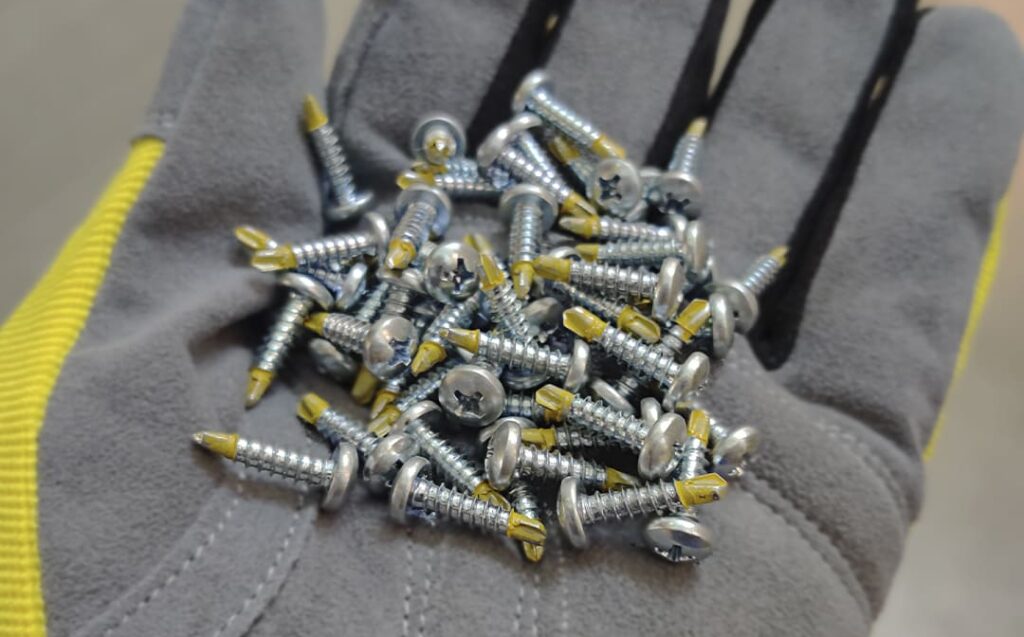
Self tapping vs self drilling CELO Fixings Technology Blog
The most notable distinction between self-tapping and self-drilling screws is that without a pilot hole, that must be pre-drilled or post-punched, self-tapping screws will not go through steel. Also critical is the exact drill or punch hole size. If the hole's too wide, the screw may get loose and not thread correctly and safely.
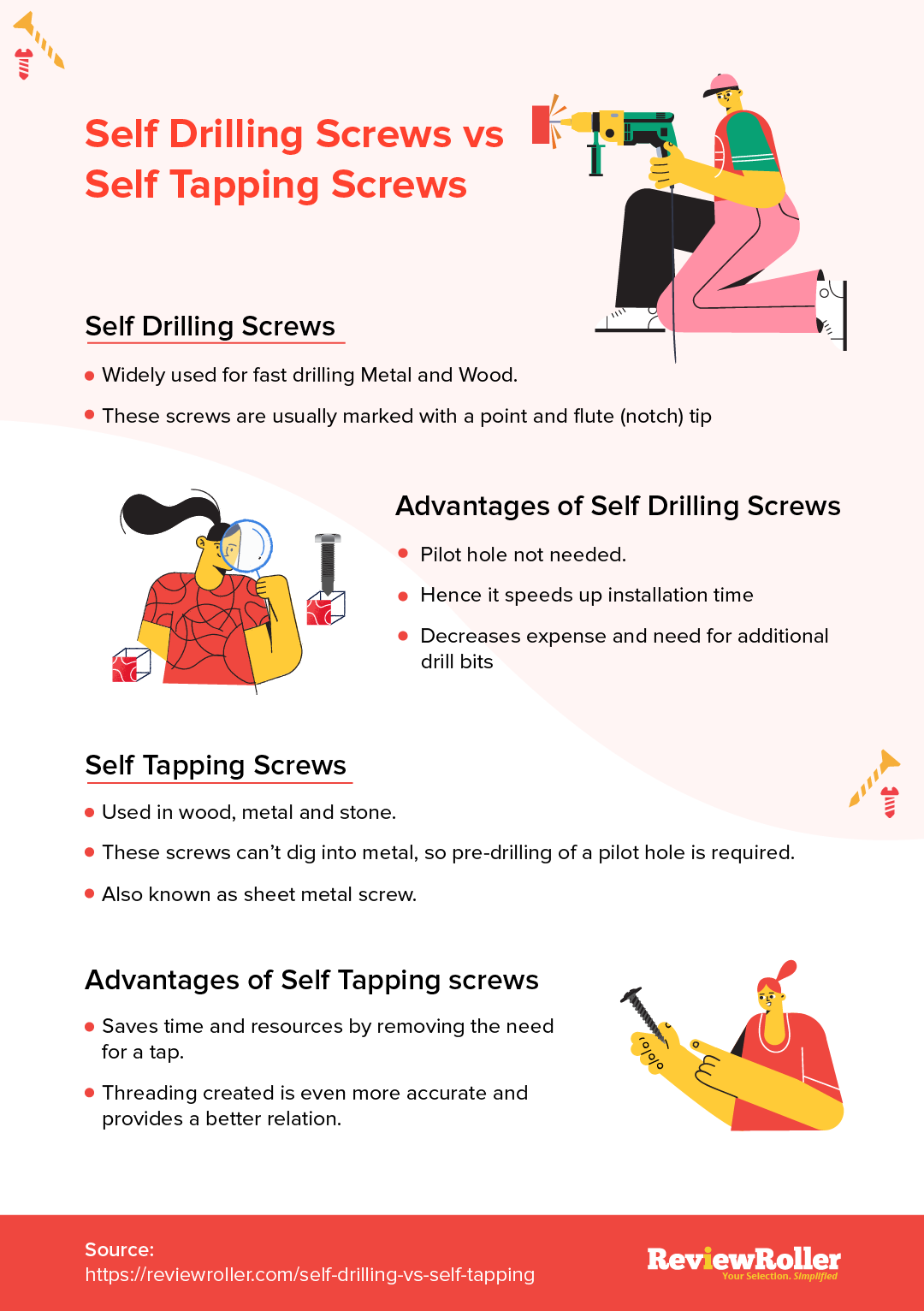
Self Drilling Vs Self Tapping Screws What's the Difference Between
Self-tapping and self-drilling screws do away with the need for pre-drilled holes and power tools for the screws to be installed securely. Self-tapping screws and self-drilling screws are both designed to create their own threads for ultra-secure joins. Both types of screws are thus ideal for creating permanent joins that are more exact.

The Differences Between SelfTapping and SelfDrilling Screws Hunker
The term "self-tapping" describes the screw's ability to drill a pilot hole, which is also known as "tapping" a material. Self-tapping screws are ideal for drilling into metal and other hard materials, but are not useful for soft materials — such as wood — that require the screw to force a path into the material for increased holding strength.

SelfDrilling vs SelfTapping Screws YouTube
October 24, 2023 Countersinking, Hardware, Services, Tapping, Tips Table of Contents Self-Drilling vs. Self-Tapping: What Are the Differences? Self-Tapping Screws Self-Drilling Screws Mastering Metal Screwing: SendCutSend's Expert Countersinking Solutions FAQs about Self-Drilling and Self-Tapping Screws Can you use self-tapping screws in wood?
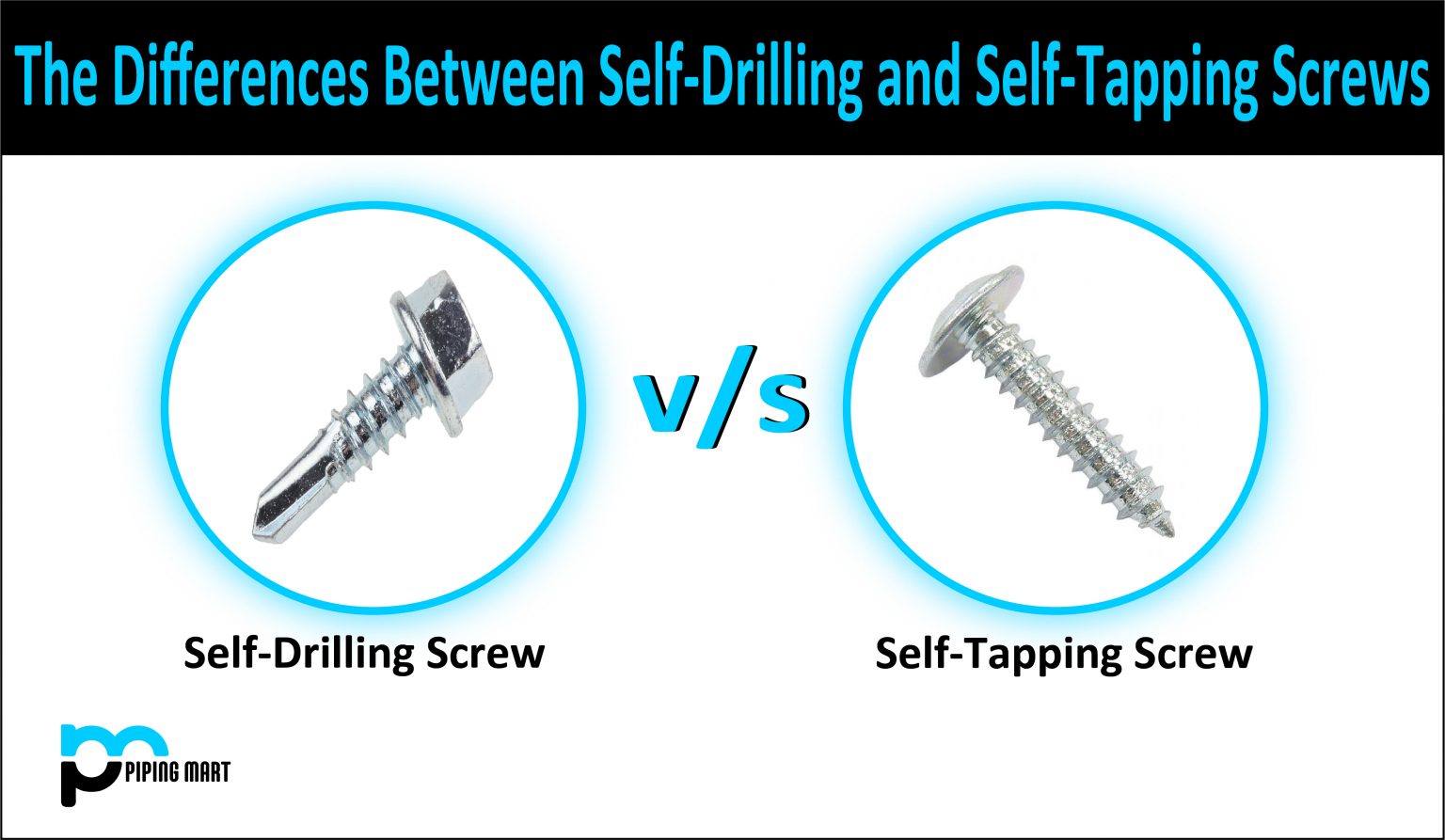
The Differences between Self Drilling And Self Tapping Screws
Differences Between Self-Tapping and Self-Drilling Screws Both self-tapping and self-drilling screws are technically self-tapping because they cut their own threads. The main difference between them is the function of their points.
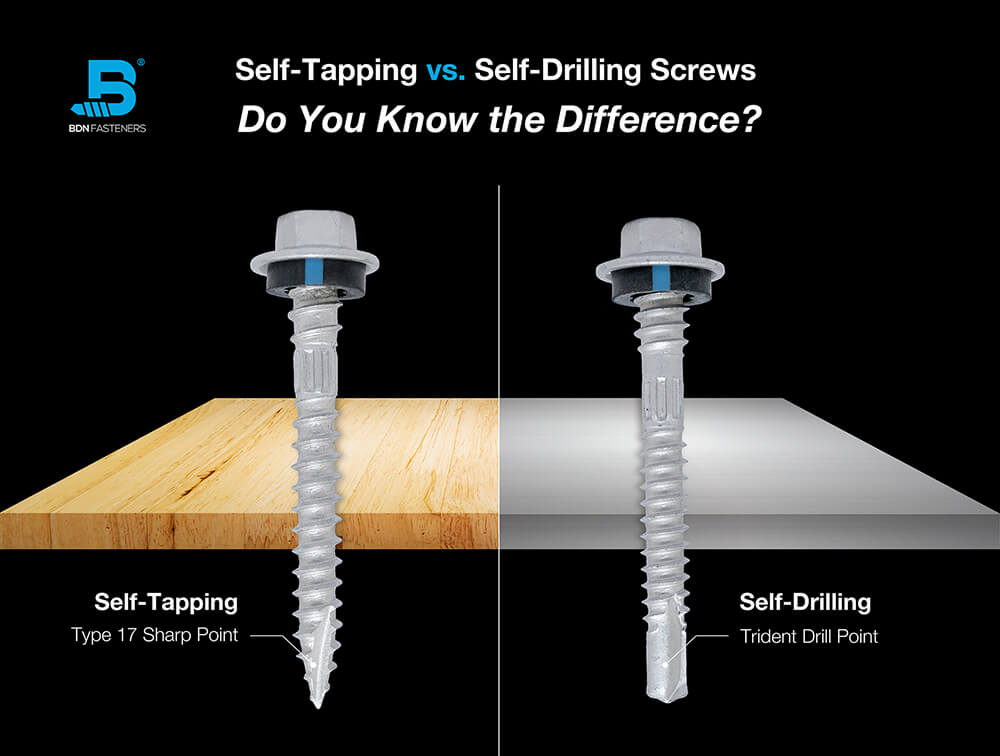
What’s the Difference Between SelfDrilling and SelfTapping Screws?
Self-tapping and self-drilling screws are two types of screws used in metal building and general construction, as well as many other applications and industries. Contrary to popular belief, the two terms are not interchangeable. No construction project is ever completed without complication.

Difference SelfDrilling SelfTapping Screws
To summarise: Self-Tapping - a screw for securing thinner sheet metals and other substrates that cuts its own thread, but usually requires a predrilled or pre-punched hole. Self-Drilling - a screw that can, well, self-drill through various gauges of metal materials without predrilling.

Fastener Guide Self Drilling vs. Self Tapping vs. Sheet Metal Screws
A prime example of this impreciseness is the distinction between self-tapping screws and self-drilling screws. Self-Tapping. Self-Drilling. A self-tapping screw can accurately be described simply a tapping screw, but is also regularly referred to as a sheet metal screw, since they are used so heavily in the sheet metal trade..

Self Tapping VS Self Drilling ScrewsWhat's The Difference YouTube
The most important difference between self-tapping and self-drilling screws is that self-tapping screws cannot go through metal without a pilot hole, which must be pre-drilled or pre-punched.

Fastener SuperStore Media Gallery
Self Tapping vs Self Drilling: Self-tapping screws need pre-made holes, while self-drilling screws create their paths as they advance, differing in their initial approach to threading into materials. If you've ever found yourself pondering the dissimilarities between these two essential types of fasteners, you're in for a treat!
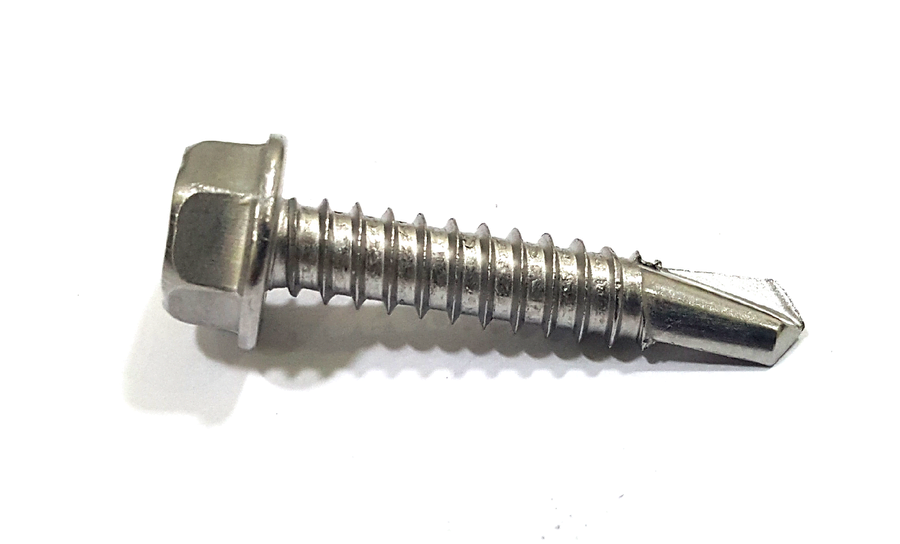
Self Drilling Vs Self Tapping Screws Main Differences
Self Drilling Screws vs Self Tapping: The Diffrences Self-Tapping Screw Self-drilling screw There are several differences between self-drilling and self-tapping screws. The differences result from the uses and the features o these screws. For the self-tapping screw, it is used in sheet metal.
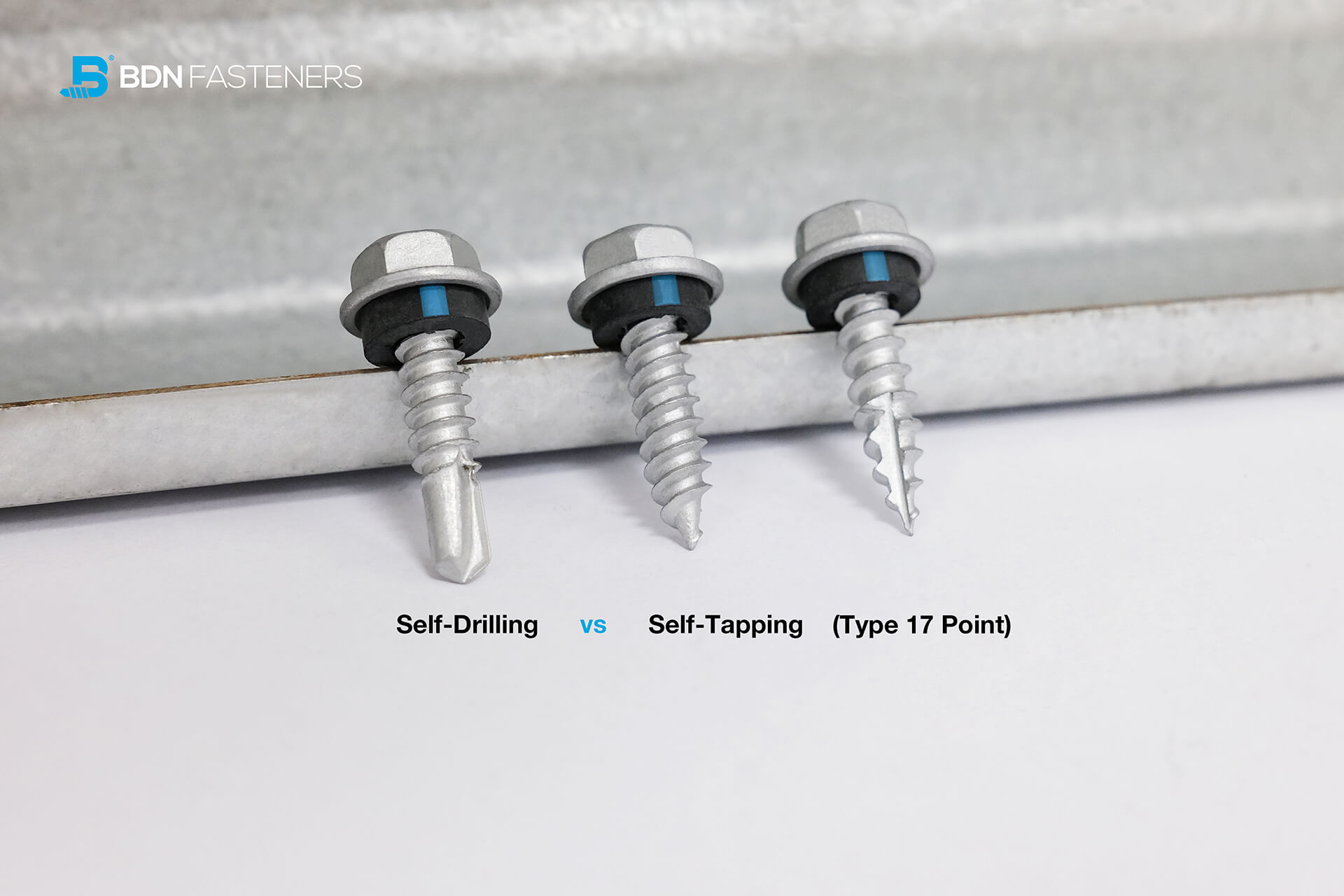
What’s the Difference Between SelfDrilling and SelfTapping Screws?
Posted on July 13, 2023 Discover the Difference: Self-Drilling vs. Self-Tapping Screws - Choosing the right screws is essential for a successful project. Learn about their unique characteristics and applications to avoid any confusion and ensure efficient fastening. Find the perfect screws for your tasks at Fastener Systems.

Selftapping vs Selfdrilling Screws YouTube
Self-tapping screws differ from self-drilling screws in that they do not have a built-in drill bit at the tip. Instead, they are designed with a sharp, tapered point that allows them to create their own threads within a pre-drilled hole.

SelfTapping vs. SelfDrilling Screws Do You Know the Difference
The most important difference between self-tapping and self-drilling screws is that self-tapping screws cannot go through metal without a pilot hole, which must be pre-drilled or pre-punched. A further consideration is the precise drill or punch hole size. If the hole is too large, the screw will lose its tight threading and become unfastened.

What Is The Difference Between A Self Drilling Screw And A Self Tapping
The primary difference between self-tapping and self-drilling screws is the pilot hole. Self-tapping screws cannot be used without a pilot hole being drilled beforehand. What a self-tapping screw can do is tap threads into the material being used, as the name suggests.

Self Tapping vs Self Drilling Sheet Metal Screws and the differences
Self-Drilling Screws. Similar to sheet metal screws, but self-drilling screws have a drill-shaped point to cut through sheet metal or steel which eliminates the need for drilling a pilot hole. The area of the screw with a notched tip collects metal filings or wood chips. This reservoir allows the drill to move through the space without shavings blocking its forward motion.